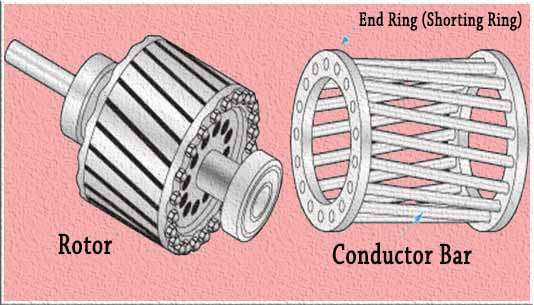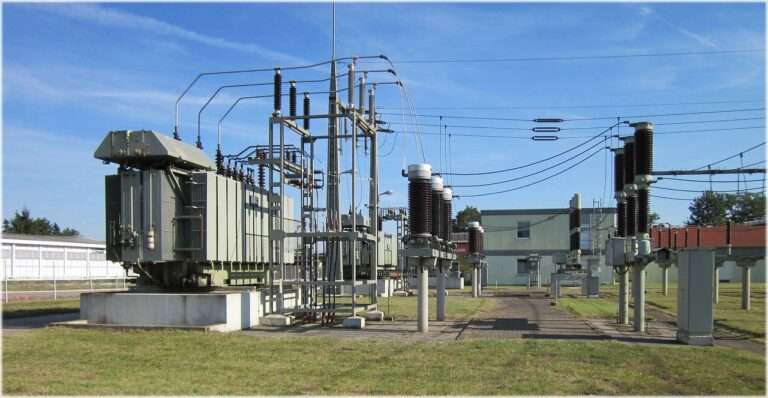Fault Current Calculation: A Basic Overview
In electrical power systems, the analysis of fault currents is crucial for ensuring the safety and reliability of the overall system. Fault currents, often referred to as short-circuit currents, are the currents that flow when a fault occurs, such as a short circuit or ground fault, which can lead to equipment damage, disruption of power supply, and potentially hazardous situations.

Read More
Fault current calculation plays a pivotal role in designing protective devices, determining equipment ratings, and establishing appropriate coordination between protective devices. In this article, we will delve into the fundamentals of fault current calculation, explore the relevant equations using simple language, and provide real-world examples for better understanding. Here is an overview of what we will learn in this article.
Fault Current Calculation
Fault current calculation is crucial for ensuring the safety and proper functioning of electrical systems. Follow these steps to calculate fault current:
Gather System Information: Collect essential information about the electrical system, including the voltage level, transformer ratings, and the impedance of components.
Identify the Short-Circuit Location: Determine the location in the system where a fault (short circuit) is likely to occur. This is usually at the point closest to the power source.
Calculate Transformer Impedance: Calculate the impedance of transformers involved in the fault path using the formula:
Transformer Impedance (Z) = Transformer Voltage / Short-Circuit Power
Calculate Cable Impedance: Determine the impedance of cables or conductors in the fault path using their length, cross-sectional area, and material properties.
Calculate Source Impedance: Calculate the impedance of the power source feeding the fault using the available fault current at the source.
Combine Impedances: Combine the individual impedances (transformer, cable, source) algebraically to find the total impedance of the fault path.
Apply Ohm’s Law: Use Ohm’s Law (I = V / Z) to calculate the fault current, where I is the fault current, V is the voltage, and Z is the total impedance.
Check Protective Devices: Compare the calculated fault current with the ratings of protective devices (circuit breakers, fuses) to ensure they can effectively interrupt the fault.
Repeat for Various Fault Types: Repeat the calculation for different types of faults (phase-to-phase, phase-to-ground) and locations to assess different scenarios.
Professional Review: Fault current calculations can be complex. It’s recommended to have an experienced electrical engineer review your calculations to ensure accuracy.
Fundamentals of Fault Current Calculation
Fault current calculation involves determining the magnitude of the current that flows through a system during a fault condition. This is crucial for selecting and setting protective devices like circuit breakers and fuses to ensure they can handle the anticipated fault currents. The calculation takes into account various factors such as system configuration, voltage levels, and impedances.
Equations for Fault Current Calculation:
Ohm’s Law Equation: The most fundamental equation for fault current calculation is derived from Ohm’s law:
I = V / Z
where
- I is the fault current,
- V is the system voltage, and
- Z is the total impedance of the system.
Impedance Equation: Impedance (Z) consists of both resistance (R) and reactance (X),
Z = R + jX,
where
- R is the resistance, and
- X is the reactance.
Short-Circuit MVA Method Equation: Fault current can also be calculated using the short-circuit MVA (Mega Volt-Ampere) method:
I = MVA / (√3 x V)
where
- I is the fault current,
- MVA is the short-circuit MVA capacity of the system, and
- V is the system voltage.
Examples for Better Understanding:
Let’s consider a simplified example to better understand fault current calculation:
Example 1: A distribution system has a 480V voltage level and a short-circuit MVA capacity of 100 MVA. Using the short-circuit MVA method, let’s calculate the fault current.
Using the equation
I = MVA / (√3 x V)
V = 480V
MVA = 100 MVA
Fault Current = 100,000,000 / (√3 x 480) ≈ 2025.23 A
This means that during a fault, a current of approximately 2025.23 amps will flow through the system.
Example 2: Consider a more complex scenario with interconnected systems. A power transformer with a reactance of 10% and a resistance of 2% is connected to a transmission line with a reactance of 15% and a resistance of 1%. The system voltage is 230 kV.
Using the impedance equation Z = R + jX:
Transformer Impedance (Z1) = 0.02 + j0.1
Transmission Line Impedance (Z2) = 0.01 + j0.15
For a fault at the end of the transmission line, we’ll calculate the fault current using the Ohm’s law equation
I = V / Z
V = 230 kV
Z = Z1 + Z2 = 0.03 + j0.25
Fault Current = 230,000 / (0.03 + j0.25) ≈ 744.77 A
Conclusion
In the realm of electrical power systems, fault current calculation is a cornerstone for ensuring safety and reliability. By understanding the basic principles, equations, and real-world examples, engineers and system designers can make informed decisions about protective device settings, equipment ratings, and system coordination.
The equations mentioned, such as Ohm’s law and the short-circuit MVA method, provide the foundation for performing fault current calculations, while the examples illustrate their practical application. Whether in residential, commercial, or industrial contexts, fault current calculation remains a critical aspect of maintaining the integrity of power systems and safeguarding both equipment and personnel.
Follow Us on Social:
Subscribe our Newsletter on Electrical Insights to get the latest updates in Electrical Engineering.
#FaultCurrent, #ElectricalEngineering, #ShortCircuitAnalysis, #PowerSystemProtection, #CircuitBreakerRating, #ElectricalFaults, #EngineeringCalculations, #PowerSystems, #ElectricalSafety, #ArcFlashAnalysis, #FaultLevel, #ElectricalDesign, #SubstationEngineering, #TransformerProtection, #FaultCurrentStudy





